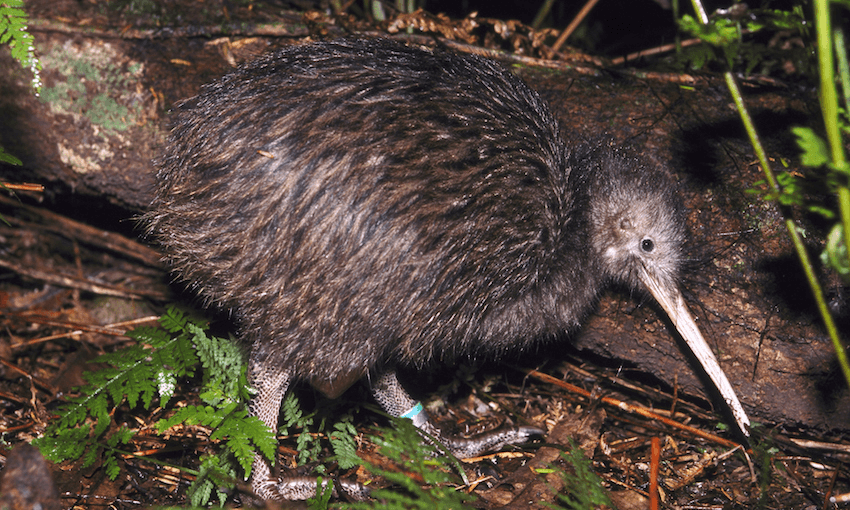Misleading remarks in the media erode public confidence in a pest-control tool we urgently need to save species, writes Nicola Toki, the threatened species ambassador for the Department of Conservation.
Last Thursday night, Newshub led the 6pm news with a report about 75 kilograms of 1080 pellets being dumped and buried by a contractor to the Department of Conservation on Stewart Island. That was true and extremely disappointing and frustrating for DOC who are now following it up with an investigation and have alerted the Environmental Protection Agency, the Medical Officer of Health and Environment Southland.
But perhaps even more frustrating for those of us who have worked hard to get the facts about the use of 1080 in New Zealand into the public arena was Patrick Gower’s editorialising. In a line that he narrated for the news story, and put it writing on the Newshub website, Patrick said: “That’s because if the 1080 hits the ground it will kill anything that eats it – including our indigenous kiwi. Even eating insects or bugs that have ingested it can harm them.”
To be clear, we have monitored 600 kiwi during and after 1080 operations over the last 10 or more years, and not a single one has been found to have been killed by 1080. Conversely, science shows that kiwi benefit hugely from sustained pest control (including 1080 and trapping), and that for example, where we don’t do pest control, 95% of all North Island brown kiwi chicks do not survive to one year of age (stoats take about 60% of those).
On Stewart Island, there are no stoats, but possums definitely impact species such as kākā and other forest birds (they are known to take eggs and chicks), not to mention the impact on the forest by their constant browsing. 1080 certainly doesn’t kill ‘anything that eats it’, and plenty of studies have borne that out. Land-based mammals, however (of which New Zealand has none, except for two tiny species of bats – which also get eaten by stoats, rats and even possums) are sensitive to 1080, for which it remains an effective poison. (This is partly due to the fact that the compound of 1080, sodium fluoroacetate, evolved in several plants throughout the Southern Hemisphere to deter browsing mammals.)
We know that feral cats (a major problem on Stewart Island) also get killed by 1080 possum operations such as the one in the Rakeahua block and that is an added bonus in terms of giving our vulnerable species a break in the constant onslaught of predation it faces on a daily basis.
Feral cats are the reason that kākāpō were eventually removed from Stewart Island, when after the initial thrill of rediscovering them there in the 1970s, rangers and scientists realised that they were rapidly disappearing into the stomachs of the resident wild felines. Down to just 50 individual kākāpō on the planet in the early 1990s, it has taken us three decades of intensive (and expensive) hands-on management with the best scientists here and overseas to help us along, to only just triple the population. Currently, the remaining native wildlife on Rakiura including the stunning harlequin gecko and the small-eared skink, still face the ongoing threat of being eaten by feral cats, and we use targeted 1080 operations to target those cats to stop populations like the Nationally Critical Southern New Zealand dotterel, which only breeds on the mountain tops of Stewart Island, from being wiped off the planet altogether. With only an estimated 167 birds remaining, this sub-species numbers similar to the kākāpō population.
The introduction of mammalian predators to the ‘land without teeth’ has already caused many extinctions, and threatens the survival of those native animals that can’t be found anywhere else. The use of biodegradeable 1080 is one of the best tools we have to help us give our native species an opportunity to breed and raise offspring, and we have more evidence on the use of 1080 than almost any other toxin in New Zealand. People have worked hard to ensure that this tool is one we can continue to use to help protect our most vulnerable species, and factually inaccurate throwaway comments like the one made on Thursday night, erodes public confidence in a pest-control tool we urgently need to save many of those species that remain.
For those of you who are still unsure about the use of 1080 to benefit biodiversity and protect native wildlife, I highly recommend you read the Parliamentary Commissioner for the Environment’s report on the use of 1080 in New Zealand.
Let’s remember we don’t have the benefit of time here. With over 50 bird species alone lost to extinction since humans got here, and now more than 4000 species dangling precariously on the cliff-edge on our threatened species list, New Zealand is very firmly in a biodiversity crisis.
The Spinoff’s science content is made possible thanks to the support of The MacDiarmid Institute for Advanced Materials and Nanotechnology, a national institute devoted to scientific research.

